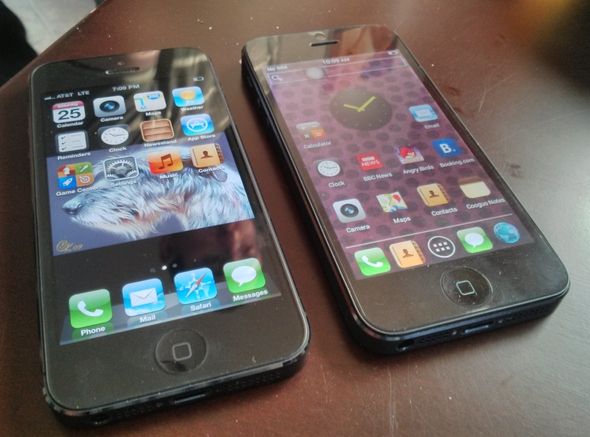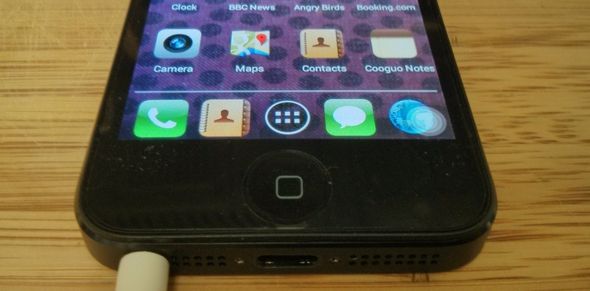Do you own an iPhone 5? Or do you wish you could own Apple’s latest but can't afford the premium price? If you answered "yes" to either question, you will probably want to know an awful or awesome secret, depending on your perspective: the iPhone 5 has a cheap knock-off that's almost indistinguishable from the real thing.
New players in the game of international trade, who care little for patent law can help those looking for a cheap knock-off. It's doubly vexing for legitimate iPhone owners that these iPhone poseurs pay low monthly fees and own phones that appear almost identical to the iPhone 5. And they paid next to nothing.
The arrival of the so-called “GooPhones” brings up many questions: Are Chinese knockoffs as good as the real thing? Furthermore, is it legal to own or import these "iPhonies"?
How the GooPhone Became Semi-Legal
The story of how the GooPhone became semi-legal begins with the chaotic nature of international intellectual property rights law. Throughout the late 80s and early 90s China and the US signed a number of international and bilateral agreements which nominally require each nation to respect each other’s intellectual property rights laws. In theory, a US patent possesses validity in China. In reality, Chinese and US courts heavily side with their respective domestic companies, frequently overriding the validity of foreign laws. This failing in international law opened the door to the GooPhone.
The GooPhone became a legal brand when a Chinese firm acquired leaked photos of the iPhone 5 before Apple filed a patent on the design. The GooPhone’s makers then hurriedly manufactured and patented the design before Apple. This revealed deep issues with the US patent system as well as international intellectual property laws. However, for those seeking a semi-legal knock-off, the GooPhone and its copycats brings up an excellent question – are Chinese knockoffs as good as the real thing?
Many Kinds of GooPhones
GooPhone became an umbrella category used to describe all iPhone 5 clones produced in China. Ironically, after its initial success the GooPhone became shamelessly copied by other Chinese companies. While some variants on the GooPhone build – clones of a clone – copy every single aesthetic component of the iPhone 5, other phones dispense with the proprietary connectors and in general improve upon Apple’s original design. However, these design alterations allow discriminating consumers to determine the difference between the Mona Lisa and its fakes, so to speak.
Look At the Back
One of the things that might jump out after turning an iPhony over is its lack of a shiny Apple logo. You might see an alternative logo, such as a Bee for the official GooPhone. Other iPhonies use the Apple logo, but with a matte finish instead of a gloss. Fewer still completely copy the apple logo, which clearly infringes on Apple's trademark.
The dead giveaway, however, is whether or not the phone has been approved for use in the United States (or elsewhere). You can check the Federal Communications Commission’s ID number online using a database lookup tool. As with many replica phones, the GooPhone pictured below lacks an FCCID, despite displaying symbols of FCC approval. However, within the operating system the GooPhone displays the same FCCID as Apple's iPhone (CLEARLY dubious).
A disreputable seller may use a skin or cover to hinder detection. Fortunately, other methods allow for determining whether or not you’re buying a fake. Such as scraping off the back of the phone with a razor.
I'm not sure why they even bothered to paste over Apple's logo. I imagine these are sold as the real deal in China and overseas as clones. I would like to note that the official GooPhones do not fraudulently use Apple's branding.
Thicker Glass
A surefire method of finding out whether you bought a fake is by examining the thickness of the glass screen. Because iPhonies tend to use cheaper materials, it's unlikely you will see Gorilla Glass 2, as the true iPhone 5 uses. Instead, fakes substitute a thicker sheet of glass – at roughly double the thickness. Unfortunately, it’s extremely difficult noticing this difference, unless you hold the phones side-by-side.
You might think the glass thickness would contribute to the weight of the phone. In terms of total weight, though, they are nearly indistinguishable from each other. I had a friend hold both and he was unable to determine which one was the real and which the iPhony.
The Operating System
While the copycat user interface appears to be extremely similar in appearance and function as a real iPhone 5, it’s not an exact copy. The replica uses a specially skinned version of Android 4.1, Jelly Bean to achieve its iOS-like appearance. You may notice the presence of the launcher button from Ice Cream Sandwich, though, which provides a dead giveaway.
It’s worth noting, however, that as a stand-alone operating system, the faux-iOS is actually quite good. The GooPhone accesses Google’s Play Store and, in all functional respects, operates as an unlocked Android handset that can work on any US cellular carrier, such as an MVNO. MVNOs offer greatly reduced prices for cellular service, without a contract. Oftentimes switching carriers only requires purchasing a SIM card from the carrier and insert it into your phone.
On the downside, it's neither iOS nor does it have the same buttons as Android. Therefore, iOS and Android veterans may find the GooPhone difficult to operate, since it only resembles iOS and lacks Android's native appearance.
Different Connectors
While some GooPhones include a Lightning connector, the “GooPhone" iploxe i5S model that I examined uses a standard microUSB port for connection. Ironically, the fake offered a small degree of superiority when compared to the real thing.
The genuine iPhone Lightning connector uses a reversible, pricey proprietary cable for charging and connection to a PC. The new cable replaces the old 30-pin dock connector which has been built into everything from cars to speaker docks, though Lightning is still catching up. Apple uses the same connector on all of its devices, which provides compatibility with dedicated accessories. Unfortunately, cheap third party cables don't exist unless you import from China.
Different Screws
The iPhone i5S used regular Philips screws, instead of the Torx screwed used in the iPhone 5 to keep its touchscreen in place. However, some GooPhones even go to the extent of using Torx screws.
Don’t Judge a Book by Its Cover
The biggest differences, as the old axiom holds true, between a fake iPhone and the iPhone 5 are on the inside. But even so, there are still strong similarities between the GooPhone and the real thing.
The iPhony includes less of everything, including stepped down RAM, a cheaper dual-core MT6577 MediaTek 1GHz CPU, a lower resolution screen, a much weaker camera and inferior thermal properties. In short, the GooPhone is a clear step down and it has some engineering issues. On the other hand, there’s a huge price difference.
Low, Low Price
Our readers will likely feel a sense of surprise when they hear about the price of a 32GB dual-core Android phone — $150, and that’s at the higher end of the price spectrum. If a buyer purchases in bulk, it’s possible to acquire a similar model for $50 each. Surprisingly, many of the sellers also include a year-long warranty, although trying to make a claim for these kinds of warranties might be difficult, depending on what part of the world you live in. I strongly doubt that the 1-year warranties will hold up across borders.
For the most part, the Chinese version of eBay, DHGate.com, provides a central location where Chinese sellers can connect with US buyers. Use of their service virtually requires use of DHGate’s escrow service. For the most part, if you attempt to make a direct transaction with a Chinese seller, they will likely keep the money and send you nothing. Fortunately, DHGate’s escrow service will hold your money while the package is in transit. When it arrives, DHGate will then transfer your funds into the seller’s hands. This system prevents abuse of the online auction houses.
DHGate isn't the only place online to get inexpensive, unlocked Chinese phones. Android-Sale.com and TheCheapChoice.com also sell phones direct from China.
Conclusion
Are iPhone replicas as good as the real thing? Definitely, not. But should you buy one? That answer depends entirely on your opinion on international intellectual property rights law. Essentially, what GooPhone did was technically legal in Chinese courts, but ethically barren. Even so, the end product is shockingly quite good for the price.
Personally, I would recommend against buying a GooPhone. International law appears to apply only when convenient for domestic corporations, so while the GooPhone is technically legal according to international trade agreements, the GooPhone's fleeting legality may prove tenuous at best. And when you scrape off the back it clearly violates trademark laws.
For those of you seeking to purchase legitimate iPhones, I would be very wary of vendors selling an inexpensive iPhone 5. There are a large number of products that don't infringe upon Apple's trademark that you can find from auction houses, such as DHGate. These handsets, while cheap, often have better specs than the GooPhone. And while all international trade comes with substantial risk, if you do your research, it's possible to get a great unlocked phone for very little. We've actually discussed unlocked Chinese phones before in the Answers section and the consensus was caveat emptor — let the buyer beware.
Anyone have any experience with imported phones? Let us know in the comments.
Special Thanks to Rajaa Chowdhury for the tip!
Image Credits: Apple and Rotten Apple via MorgueFile.com






